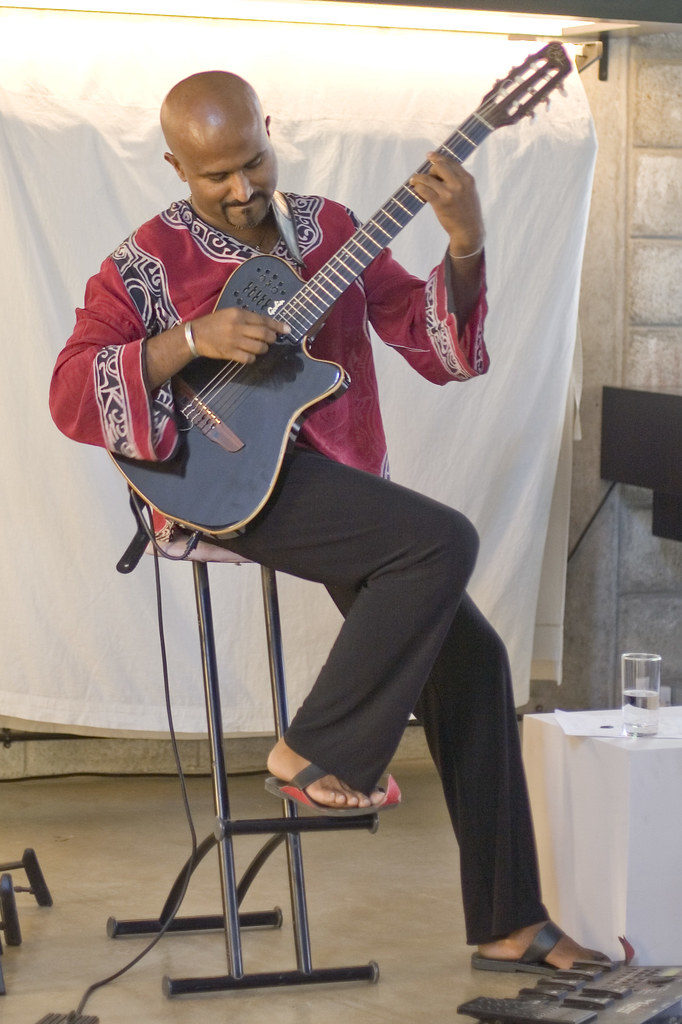Posts Tagged ‘Jazz and Rock Guitar Technique’
Jazz or Rock Guitar – Troubleshooting with the Alexander Technique (Electric)(Musicians)(Psychology)(Pain)(Strain)(Injuries)(Posture)(Albuquerque)
This ebook, An Alexander Technique Approach to Jazz and Rock Guitar Technique, is published on this website in a PDF format. It is very detailed and practical, and it will give you the physical tools you need to take the limits off of your ability to create the accurate guitar technique you want without sacrificing your body.
This ebook is also for sale on all AMAZON websites in a KINDLE format.
Located in Albuquerque, New Mexico, U.S.A. (MOVEMENT THERAPY)
Troubleshooting is the bridge between posture and technique I’ve created in my work with jazz or rock guitar players. I’m an Alexander Technique teacher and a former concert guitarist. One of my former Alexander Technique teachers gave me the tools to apply all of the principles of Alexander Technique great posture to my guitar playing, and she also gave me the tools to expand the Alexander Technique principles of good postural use to guitar technique.
This is what I’ve done in my ebook on jazz or rock guitar playing. I go into extreme detail in this ebook on how to use your whole body on the jazz or rock guitar for the most posturally mechanically advantageous body use. I also go into detailed specifics of jazz or rock guitar technique.
You can teach a jazz or rock guitar player to have beautiful posture on the jazz or rock guitar, but what if the jazz or rock guitar player’s technique isn’t serving the jazz or rock guitar player? There are two major reasons for this.
The first is the jazz or rock guitar player’s technique is flawed, completely or partially. In other words, the jazz or rock guitar player is asking his arms and hands to do things that really can’t be done.
The second major problem is with how the jazz or rock guitar player is approaching his technique – the technique is perfectly ok, but the jazz or rock guitar player’s approach to it is very inefficient.
This latter is closer to traditional Alexander Technique thinking. It simply means you are doing the right thing the wrong way. The most obvious example of this is using too much muscle to get the job done. So, the jazz or rock guitar player sits with pretty good upright posture, but uses too much muscle to sit upright and causes pain, strain, tension, and compression in the whole body. He looks good and feels bad, and this limits how well he plays.
When this happens in the specific jazz or rock guitar technique of how the jazz or rock guitar player uses his fingers, then if the jazz or rock guitar player is always poised with tension in his hands and fingers to play, then no matter how externally good his technique looks to everyone else, he is compromising his hands and is probably on his way to arthritis.
Now, the first problem – the jazz or rock guitar player’s technique isn’t the best choice. This can only be solved if the jazz or rock guitar player is ready to become his own teacher, his own master. What do I mean?
THE MOMENT THE JAZZ OR ROCK GUITAR PLAYER PUTS EVERYTHING, WITHOUT EXCEPTION, THAT HE OR SHE HAS EVER LEARNED ABOUT PLAYING THE INSTRUMENT UP FOR SCRUTINY, THE JAZZ OR ROCK GUITAR PLAYER IS TRULY READY TO BE HIS OR HER OWN MASTER. AT THIS POINT THE JAZZ OR ROCK GUITAR PLAYER ISN’T A JAZZ OR ROCK GUITAR STUDENT ANYMORE AND IS NOW CONTRIBUTING TO THE JAZZ OR ROCK GUITAR WORLD.
When I started questioning everything I had ever learned about guitar technique, it was the most freeing thing I had ever experienced as a classical guitarist. It was an amazing feeling to take total control of my guitar technique. I revamped nearly my whole technique.
WHEN YOU REPLACE WHAT DOESN’T WORK, AND WILL NEVER ALLOW YOU TO BE THE JAZZ OR ROCK GUITAR PLAYER YOU COULD BE, WITH WHAT WORKS, THEN YOU ARE FREE TO HAVE FUN ON THE JAZZ OR ROCK GUITAR.
One final point – when you replace what hasn’t been working for you on the jazz or rock guitar with what works, the internalizing of the new technique can be very fast. When you experience how effortless the new way can be, then you can very quickly let go of the old way. The old way only takes a long time to change, if you resist the new way by holding onto to the false security of what never completely worked.
